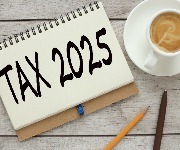Money Purchase Annual Allowance: what you need to know about the tax-free savings limit for 2017/18

The Government has confirmed a substantial cut in the Money Purchase Annual Allowance for pension savers will apply and be backdated for 2017/18. Here’s what you need to know.
Sections
What is the Money Purchase Annual Allowance?
The Money Purchase Annual Allowance (MPAA) is a tax-free savings limit that applies to people who have begun drawing money from their pension but still want to contribute money into a defined benefit pension.
Thanks to the new pension freedoms introduced in April 2015 you can access your pension fund from 55 and take a 25% lump sum tax-free.
But once you have accessed your pension money, the amount you can put back in is vastly reduced under the new MPAA rules.
How much is the MPAA limit for 2017/18?
The MPAA limit had been set at £10,000 but Chancellor Philip Hammond wanted to cut the annual tax-free pension savings limit to £4,000 a year.
The change was meant to stop people unfairly benefiting from ‘recycling’ their pension savings – withdrawing cash from their pots and then claiming tax relief on new contributions.
The new £4,000 MPAA limit was due to come into force on 6 April earlier this year, but the move was put on hold as the Government rushed to pass the Finance Bill ahead of the snap General Election.
Now everything has calmed down the Government has confirmed the £4,000 MPAA will be reinstated and will apply retrospectively for 2017/18.
Mel Stride, the financial secretary to the Treasury, confirmed everything left out of the Finance Bill would be applied from April 2017.
He said: “The Government…expects to introduce a Finance Bill as soon as possible after the summer recess containing the withdrawn provisions.
“Where policies have been announced as applying from the start of the 2017-18 tax year or other point before the introduction of the forthcoming Finance Bill, there is no change of policy and these dates of application will be retained.
“Those affected by the provisions should continue to assume that they will apply as originally announced.”
Can you carry forward the MPAA from previous years?
MPAA is set at £4,000 a year and you are not allowed to carry forward any unused allowances from previous years.
How does the limit apply?
The MPAA includes both your own contributions and any other contribution made on your behalf from your employer into a defined benefit pension.
The limit is per person rather than per scheme. So, it applies across all contributions made in a year.
What happens if you exceed the MPAA tax-free savings limit?
If you pay too much into your pension in a tax year, and end up going over the annual allowance you will be hit with a tax charge on the excess amount.
The amount you’ve gone over by will be added to your income for that year and you’ll be charged Income Tax accordingly.
The excess could push you into a higher Income Tax bracket.
Before making a big pension contribution it could be worthwhile seeking expert advice to make sure you don’t end up with a hefty tax bill.
Does the MPAA apply to everybody?
The MPAA is only triggered if you access your pension.
If you haven't done this you can save £40,000 a year into a pension or up to 100% of your annual earnings.
However, high earners, those with income over £150,000, will see their allowance taper down to £10,000 a year.
Most Recent
Comments
-
I think you guys are correct, however there are situations where, you may not be in drawdown, but have taken your 25% allowance previously, and now simply find yourself with earnings or income that you don't necessarily need (perhaps a surprise investment payout), which you would simply like to put back into your pension, for when you do actually need it. Yes it is being recycled, but it's not simply claiming pension funds and simply repaying the same money for double relief - but its hard to distinguish from that, so limiting the possibility is I suppose reasonable, That's been my situation and I would love to get tax relief on it. who wouldn't? IMVHO.
REPORT This comment has been reported. -
For once - and you won't hear me say this very often - the Treasury may have a point. (Don't worry, I'll be back to normal after a stiff drink!) Logic dictates, Captain, that if you have a pot of money put aside as a personal pension, during any one tax year you should either draw money from it, OR pay money into it, OR leave it alone to hopefully grow a little. It seems odd to be drawing money from an account while paying back into the same account at the same time, which implies that there is some tax advantage being gained. Or "leveraged" if you believe in that sort of expression. (Malcolm's situation is perhaps a little different. You could receive the state pension while still paying into a private one, provided you don't draw from the private one as well. If you are still working and with a state income too, you should just be paying into the private pension, not yet drawing income from it.) I'm preparing myself to be shot down in flames for this, but to hell with it.
REPORT This comment has been reported. -
If Malcolm is receiving a state pension he must be over 65 and cannot have accessed his pension using flexible terms provided by Osborne. He is entitled to it at 65. It is not taken it early and he can put money back into a pension but within limits as I see it. It is hardly recycled as he is working it is his earnings that are funding the new pension NOT his pension. That is the logic I see.
REPORT This comment has been reported.
Do you want to comment on this article? You need to be signed in for this feature









17 July 2017